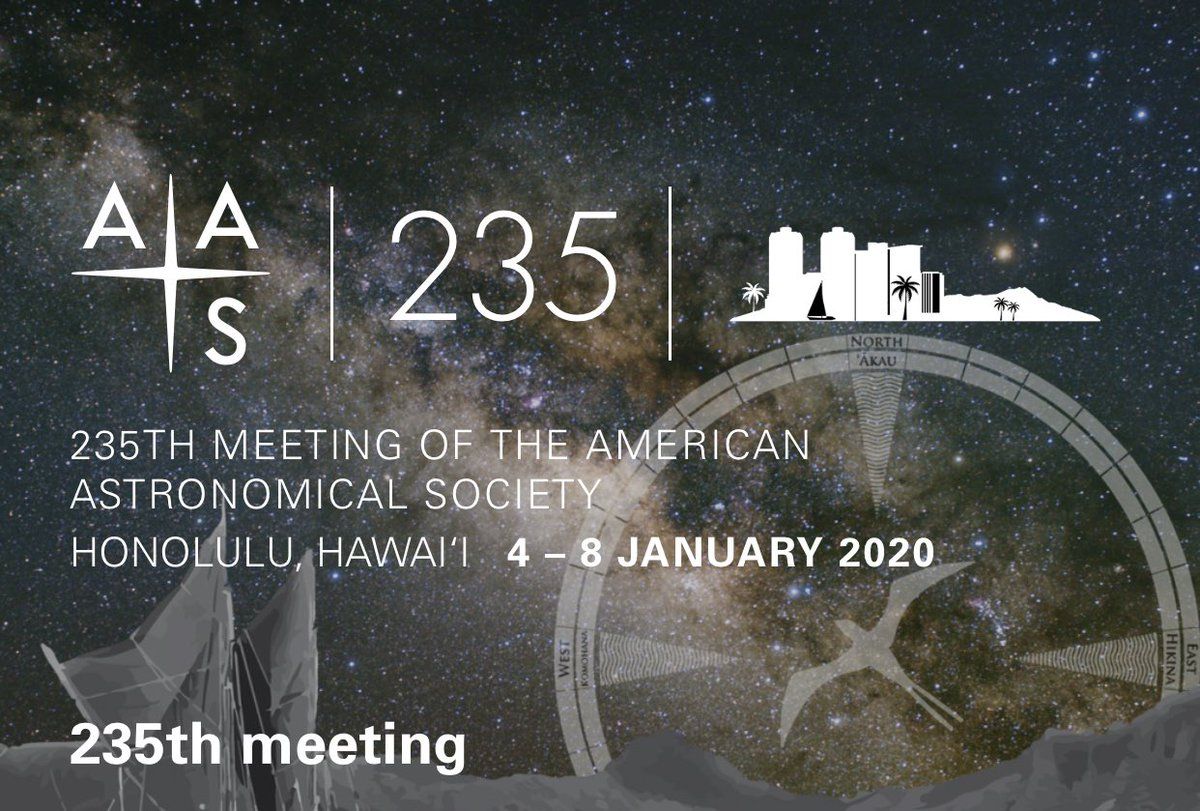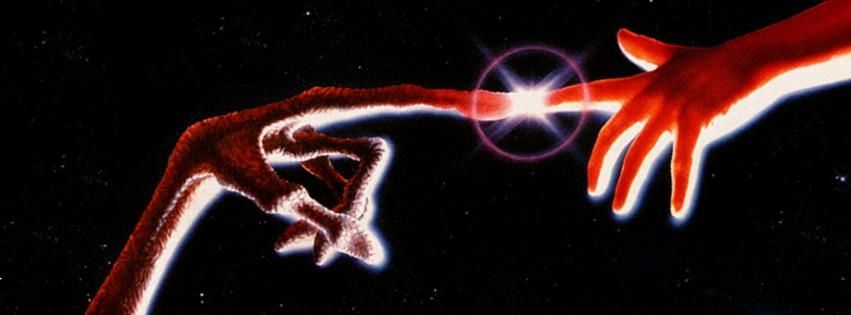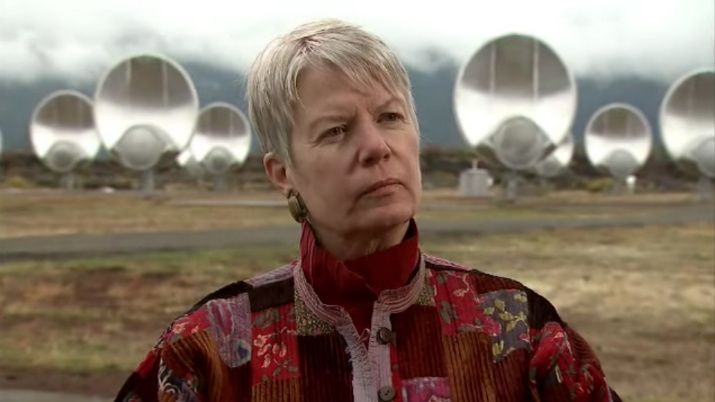What Scientists Could Learn From Alien Hunters
February 10, 2020 (wired.com)
• Astrobiologists use telescopes to seek biochemical evidence of microbes on other planets. SETI scientists use telescopes to look for intelligent beings’ technological signatures. Then there are those who believe that intelligent extraterrestrials are here, now, buzzing the skies of planet Earth. The respective members of these three groups of ‘alien hunters’ do not necessarily get along with one another. Their interactions demonstrate a concept that sociologists call “boundary-work”, e.g.: building fences and enforcing ideas about who counts as a scientist, and who doesn’t. This ‘boundary’, however, is subjectively based on social mores, social fears, and politics.
• People who find themselves on the outside of mainstream science often foster a sense of antagonism. But the line of demarcation as to what is ‘outside’ of mainstream science shifts with time. Science’s ideas about which ET-seeking methods are valid and which are ‘fringey’ have changed over the past few decades.
• In the early years, astrobiologists and SETI – the Search for Extraterrestrial Intelligence, worked together. ‘Perhaps those microbes on a far-off planet evolved and built radio transmitters.’ But then their respective disciplines parted ways. In order to study the conditions of life on other planets, astrobiologists tend to study conditions on this planet – drilling into frozen lakes, doing lab experiments, studying geological evolution, researching our genetics. They use this data to determine which exoplanets have the best chance for evolving life forms. SETI, on the other hand, search for electromagnetic transmissions and signatures of technologies that are not yet understood.
• In the early 1970s, NASA and the National Academy of Sciences considered SETI an important component of the search for extraterrestrial lifeforms. Then politicians such as Senator Richard Proxmire denounced SETI as a wasteful, useless, and futile endeavor. Congressional funding of SETI’s ‘High-Resolution Microwave Survey’ in the early 1990s was cut-off in 1993. The National Science Foundation banned SETI projects from its funding portfolio. Grant opportunities dried up. NASA and mainstream astrobiologists began to distance themselves from SETI.
• In the 2000s, SETI turned to private investors like Paul Allen and Yuri Milner and became associated with searching for ‘little green men’ and UFOs. The mainstream considered SETI ‘laughable pseudo-research’ outside the bounds of proper science. At the same time, astrobiology became a “legitimate” science. Astrobiologist Sara Seager told Congress in 2013, “We’re not looking for aliens or searching for UFOs. We’re using standard astronomy.”
• But SETI scientists have been clawing their way back to legitimacy. In April 2018, Congress directed NASA to start including searches for “technosignatures” in its broader search for life beyond Earth. The House Appropriations Committee is deciding whether SETI’s work will be sanctioned in the 2020s.
• One thing that both “legitimate” astrobiologists and SETI have in common is that they both consider ufology silly. They keep their distance from anyone who believes in UFOs or an extraterrestrial presence. But for someone at SETI who imagines light-years-away microbes growing into sentient beings that broadcast radio waves and beam lasers, is it that much harder to imagine these beings traveling here to Earth?
• Mainstream academic researchers claim that virtually no hard UFO data exists beyond personal accounts. Ufology doesn’t explain how or why alien spaceships could or would come all the way here. Then there are the standard variety of banal explanations for bogus UFO sightings. Ufology is not science in the way SETI researchers do science.
• Greg Eghigian, a Penn State researcher, points out that “From the early-1950s through the 1970s, a number of academics took the study of UFOs seriously and regularly engaged with ufologists.” Back then the military had official UFO research programs, even though their conclusions usually amounted to “nothing to see here.” Those programs ended. The Air Force-sponsored 1968 ‘Condon Report’ concluded that studying UFOs was a waste of time, and UFO research was consigned to the fringes.
• In 1983, Thomas F. Gieryn published his paper: “Boundary-Work and the Demarcation of Science from Non-Science.” When researchers do ‘boundary-work’, they create and maintain lines around who qualifies as a scientist and who doesn’t, and what is and what is not science. In so doing, they bestow legitimacy onto themselves and deny it to others. But this can backfire on them. When the public perceives scientists arbitrarily establishing exclusive scientific authority, people themselves feel alienated, fostering conspiracy theories about the mainstream scientists’ true motives.
• Similar to anti-vaccination activists, GMO no-goers, and people who say climate change has nothing to do with people, many ufologists have decided that scholars and politicians are at best, narrow-minded or, at worst, engaged in a deliberate attempt to hide information.
• Psychologist Stuart Appelle wrote that ufology “is not simply rejected as a legitimate discipline, it is categorically dismissed.” Rejection suggests a conclusion based on close examination and careful reflection. But dismissal is a judgment that close examination is not warranted at all, which is not very scientific. This silencing is a form of ‘social stigmatization’.
• Adam Dodd, a communications instructor at the University of Queensland (in Australia) sees mainstream scientists’ dismissal of the UFO phenomenon as ‘saving face’ in order to maintain their reputation among their own peers. An example of this is when Stephen Hawking concluded that the absence of any evidence of aliens essentially equates with evidence of the absence of aliens. And therefore, for a ‘true scientist’, UFOs and aliens are not worthy of consideration.
• This ‘boundary-work’ by mainstream scientists is both frustrating and patronizing to UFO researchers who find themselves outside of the mainstream fence. They suspect a mainstream agenda is being formed against them. Ufologists become mistrustful of so-called ‘experts’, while the mainstream regards UFO followers as ‘cranks’. So they each band together to create an ‘us versus them’ scenario, and keep their distance from each other. Scientists cannot afford the professional consequences of being associated with fringe ufologists. As a consequence, science probably loses out on the ‘kernels of truth’ in the nut bin.
• The thing that both sides generally have in common is the desire to get to the truth. But with the elitist scientists’ blanket denial of all that is lumped together as ‘fringe conspiracy theories’, these ‘hard science’ practitioners also tend to ignore cultural knowledge, emotional knowledge, spiritual knowledge, and personal knowledge. Their plodding and myopic focus on hard science may slow the rate of scientific achievement.
• Today, mainstream science seems to be more willing to embrace SETI. In 2014, SETI astronomer Jill Tarter received radio astronomy’s highest honor, the Janksy Lectureship award. And this is slowly expanding into the field of ufology. The chair of the Harvard astronomy department has publically suggested that the ‘asteroid’ Oumuamua could be a visiting spaceship.
• A NASA scientist notes that both SETI and ufology are about ‘finding the signal in the noise’. There may be ‘signals’, however small, that indicate a phenomena associated with UFOs that cannot be explained or denied that should be taken into consideration. Rather than dismissing the research of a particular ‘fringe’ group outright, scientists might listen. If so, the reaction by the fringe might be to consider mainstream ‘expert’ analysis more. There can be important truths revealed from both sides of the spectrum.
Aliens—hypothetical beings from outer space—fall into roughly three categories. They could be far-away microbes or other creatures that don’t use technology humans can detect; they could be far-away creatures that use technology earthlings can identify; or they could be creatures that have used technology to come to Earth.


Each of these categories has a different branch of research dedicated to it, and each one is probably less likely than the last to actually find something: Astrobiologists use telescopes to seek biochemical evidence of microbes on other planets. SETI scientists, on the other hand, use telescopes to look for hints of intelligent beings’ technological signatures as they beam through the cosmos. Investigating the idea that aliens have traveled here and have skimmed the air with spaceships, meanwhile, is the province of pseudoscientists. Or so the narrative goes.
Although these three groups have a common goal—answering the question “Are we alone?”—they don’t always get along. Their interactions demonstrate a concept that sociologists call “boundary-work”: designing and building fences around Legitimate Science, and enforcing ideas about who counts as a scientist, who doesn’t, and why. Those fences are supposed to defend science’s honor, demonstrate scientists’ objectivity, and uphold the profession’s standards. That’s good! We want that! But the fence posts also demarcate a boundary that isn’t objective but is, in fact, a function of time, location, culture, social mores, social fears, and politics. The enforcement of this sometimes-shifting boundary can send people who find

themselves on the outside further away from mainstream science, fostering a sense of antagonism and slighted outsiderism. The history of hunting aliens is a good way to understand those unintended consequences of boundary-work in other disciplines. Because even though none of the groups actually knows, or has gained access to, whatever ET truth is out there, science’s ideas about which ET-seeking methods are valid and which are fringey have changed over the past few decades.
Astrobiology v. SETI

In the early years of astrobiology and SETI, the two groups worked more side by side than they later would. After all, they just existed at different locations on a spectrum: Maybe microbes arose on a far-off planet, and maybe those microbes evolved and built radio transmitters. Astrobiology technically just means the study of life in the universe. But that encompasses a lot: Astrobiologists look into questions like how life started, how it evolved, and what environments can support it. To study these questions, scientists can gather data on this planet, drilling into frozen lakes, doing lab experiments involving the chemistry of early Earth, studying geological evolution on Mars, or gaining a better understanding of genetics to get a better sense of what alternatives might exist to our own DNA. They also investigate what life might look like on another world, whether it has existed on other solar-system planets, and how to pick out a habitable or perhaps inhabited exoplanet from astronomical data.

SETI, the search for extraterrestrial intelligence, falls logically within the scope of astrobiology. But this search, usually for electromagnetic transmissions, is more speculative, since it deals less explicitly with the kinds of chemistry, geology, physics, and biology we can observe in the solar system—and so perhaps beyond—and instead seeks signatures of technology whose nature we don’t yet, and may never, know.

Still, NASA initially supported both sorts of searches (although it called astrobiology “exobiology”). The venerable National Academy of Sciences, in its 1972 recommendations for the search for life beyond the solar system, listed SETI as an important component of exobiology, stating that “SETI investigations are among the most far-reaching efforts underway in exobiology today.” Trouble bubbled up between the groups, though, after SETI became the object of political ire. The search for smart aliens had already proven to be a favorite football for politicians, a frequent contender for cancelation—because of the low probability of success, the speculation required, and the money that they said could be better spent on Earth. For instance, in 1978, Senator Richard Proxmire awarded the nascent project his infamous Golden Fleece Award, for wasting government funds on what he considered a useless, futile endeavor. In the early 1990s, NASA finally began its first SETI observations, part of the project that had been on the drawing board when Proxmire mocked it: then called the High-Resolution Microwave Survey. But the year after the survey began, in 1993, Congress shut down the program.
FAIR USE NOTICE: This page contains copyrighted material the use of which has not been specifically authorized by the copyright owner. ExoNews.org distributes this material for the purpose of news reporting, educational research, comment and criticism, constituting Fair Use under 17 U.S.C § 107. Please contact the Editor at ExoNews with any copyright issue.














